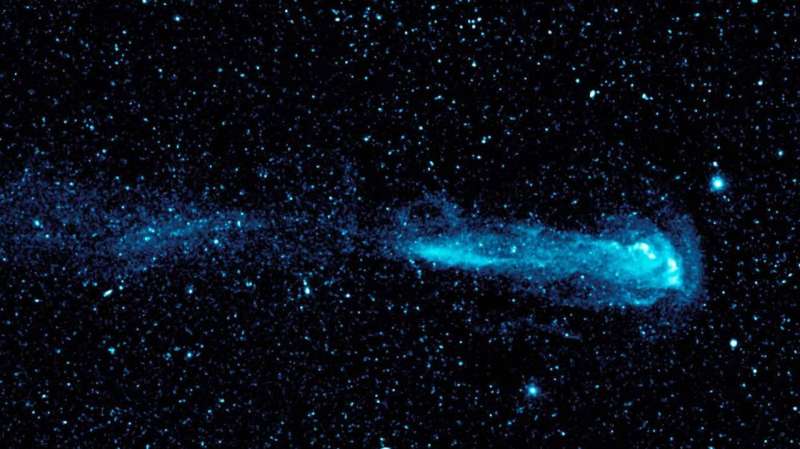Mira the star. Credit: NASA
Almost all truly intriguing systems are ones that are far away from equilibrium—such as stars, planetary atmospheres, and even digital circuits. But, until now, systems far from thermal equilibrium couldn't be analyzed with conventional thermodynamics and statistical physics.
When physicists first explored thermodynamics and statistical physics during the 1800s, and through the 1900s, they focused on analyzing physical systems that are at or near equilibrium. Conventional thermodynamics and statistical physics have also focused on macroscopic systems, which contain few, if any, explicitly distinguished subsystems.
In a paper published in the journal Physical Review Letters, SFI Professor David Wolpert presents a new hybrid formalism to overcome all of these limitations.
Fortunately, at the turn of the millennium, "a formalism now known as nonequilibrium statistical physics was developed," says Wolpert. "It applies to systems that are arbitrarily far away from equilibrium and of any size."
Nonequilibrium statistical physics is so powerful that it has resolved one of the deepest mysteries about the nature of time: how does entropy evolve within an intermediate regime? This is the space between the macroscopic world, where the second law of thermodynamics tells us that it must always increase, and the microscopic world where it can't ever change.
We now know it's only the expected entropy of a system that can't decrease with time. "There's always a non-zero probability that any particular sample of the dynamics of a system will result in decreasing entropy—and the probability of shrinking entropy grows as the system gets smaller," he says.
At the same time that this revolution in statistical physics was occurring, major advances involving so-called graphical models were being made within the machine learning community.
In particular, the formalism of Bayesian networks was developed, which provides a method to specify systems with many subsystems that interact probabilistically with each other. Bayes nets can be used to formally describe the synchronous evolution of the elements of a digital circuit—fully accounting for noise within that evolution.
Wolpert combined these advances into a hybrid formalism, which is allowing him to explore thermodynamics of off-equilibrium systems that have many explicitly distinguished subsystems coevolving according to a Bayes net.
As an example of the power of this new formalism, Wolpert derived results showing the relationship between three quantities of interest in studying nanoscale systems like biological cells: the statistical precision of any arbitrarily defined current within the subsystem (such as the probabilities that the currents differ from their average values), the heat generated by running the overall Bayes net composed of those subsystems, and the graphical structure of that Bayes net.
"Now we can start to analyze how the thermodynamics of systems ranging from cells to digital circuits depend on the network structures connecting the subsystems of those systems," says Wolpert.
More information: David H. Wolpert. Uncertainty Relations and Fluctuation Theorems for Bayes Nets, Physical Review Letters (2020). DOI: 10.1103/PhysRevLett.125.200602
Journal information: Physical Review Letters
Provided by Santa Fe Institute
























